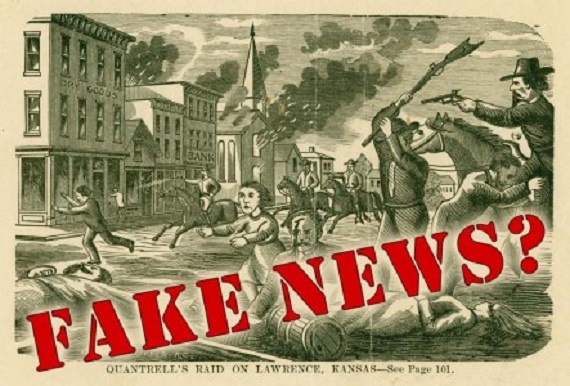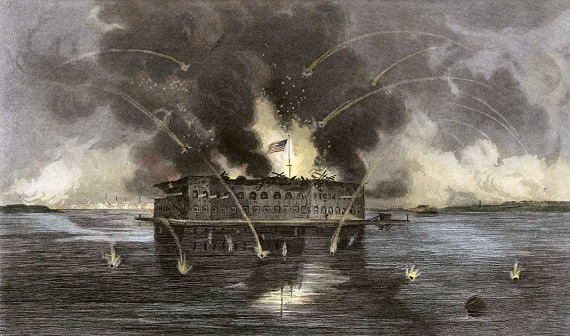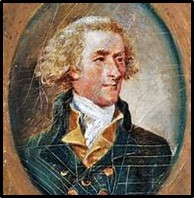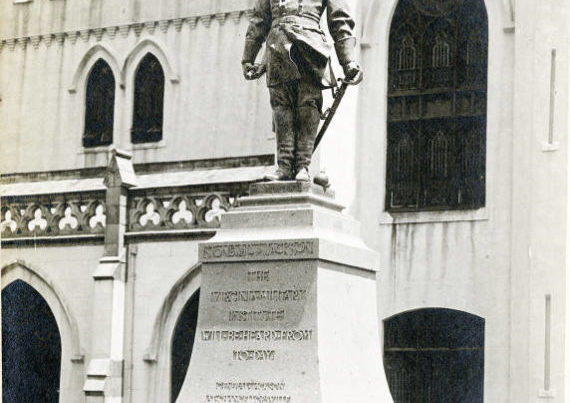Whether it’s the Civil War, War Between the States, the War for Southern Independence or Lincoln’s War, this extremely important period of American history continues to resonate powerfully over 150 years later. And with American Veterans monuments and artwork being censored and removed throughout the country, some might even say that Reconstruction and the fight over Jeffersonian ideals vs. Hamiltonianism never really ended. But whatever the case, the June/July 2018 issue ofMissouri Life, a glossy grocery store checkout magazine printed up for the masses, recently reinvigorated a debate in regards to one of the most successful and infamous Confederate military victories in the Trans-Mississippi Theatre in 1863.
Written by Ron Soodalter, The Wild Bunch, Riding with the Younger Brothers, Soodalter notes at the outset of the piece that, “‘Lost Cause’ apologists still romanticize the exploits of Quantrill and his bushwhackers. While their loyalty to the South – or to any cause other than their own – was questionable, the havoc wreaked by Quantrill’s Raiders on soldiers and civilians alike was indisputable. The culmination of Quantrill’s career was his August 21, 1863 predawn descent on the pro-Union town of Lawrence, Kansas. Riding under a black flag used by irregular Confederate units to signal ‘no quarter,’ more than 400 guerrillas slew as many as 200 defenseless men and boys, looted stores and homes, and burned all but five houses to the ground.”
Mr. Don Gilmore, retired from the Staff College at Fort Leavenworth and an independent researcher, author of Civil War on the Missouri-Kansas Border, and consultant for movies such as “Ride with the Devil” notes that the Missouri Life article may have unfortunately suffered from some misinformation. “Again we hear about the guerrillas attacking 200 ‘defenseless men and boys.’ That assertion is clearly inaccurate. There wasn’t a man in Lawrence and few boys fifteen and older that didn’t have a gun assigned to them,” notes Gilmore. “One defender said the attack was so quick and powerful that there seemed no way to resist it. But that was Lawrence’s fault. They had no lookouts at the entrances to the town, allowing the guerrillas to enter to within striking range without detection. The Union military camps were swamped in minutes, sealing off the main street and the arsenals there. That is seldom mentioned, but Lawrence was guilty of very bad planning for an attack that had been expected for months and the town reinforced even.”
Ron Soodalter, the New York author of The Wild Bunch Missouri Life article (and who has also written for the New York Times, Smithsonian, Civil War Times, America’s Civil War and currently serves on the Board of Directors of the Abraham Lincoln Institute), replied to Mr. Gilmore by stating, “for decades I have engaged in discussions with Quantrill and Anderson apologists, James and Younger defenders, and denigrators of their victims. To blame Lawrence itself for the senseless slaughter that a band of butchers levied upon it is not only historically inaccurate; it is grossly insensitive. It is akin to blaming the World Trade Center for not preparing for and repelling the terrorist attack that destroyed it. There were admittedly depredations on both sides throughout the war, but make no mistake, the attack on Lawrence qualifies as one. (To quote a line from a classic Jimmy Stewart western, ‘Sherman was war….Quantrill was meanness.’)”
Of course horrible things happened during this brutal and bloody war waged by Americans, against Americans. But in attempting to learn how to build more caring and compassionate communities – which are once again harshly divided – can we bear to ignore, excuse or dismissively categorize certain views as “Lost Cause” mythology? For example, is it Lost Cause mythology to assert that Union Generals Sherman or Grant waged Total War against civilian populations – including women and children – as well as burned and bombed hospitals and churches at Vicksburg MS, Columbia SC and numerous other civilian populations throughout the South? (The Diary of Emma LeConte: When the World Ended and UnderSiege: Three Children at the Civil War Battle for Vicksburg by Andrea Warren) Or do we sweep away the numerous accounts of pastors and family members throughout Missouri who were persecuted, jailed and killed for their beliefs as simply being the experiences of “Southern” apologists? (Martyrdom in Missouri, by Rev. W.M. Leftwich, 1870 and American Bastille: A History of the Illegal Arrests and Imprisonment of American Citizens in the Northern and Border States on Account of Their Political Opinions During the Late Civil War, John A. Marshall, 1869).
Meanwhile, Chris Edwards, a Missouri historian, musician and writer (with a MA History from the University of Missouri) makes a compelling case that the popular “establishment” views regarding Quantrill’s attack on Lawrence may not be entirely accurate. For example, Edwards has noted in a number of fascinating presentations that news of the Lawrence attack was reported by northern writers (like William Phillips, James Redpath, John Kagi) writing for large newspapers (like the New York Tribune, Chicago Tribune, Boston Traveler). Edwards notes the 15+ federal military posts arranged on the border between Missouri and Kansas, as well as the approximately 52 Kansas soldiers stationed in Lawrence at the time of the attack (14th Kansas Cavalry, 2nd Kansas Colored and the 12th Kansas Regiment) – as well as the fortifications, Fort Lane and Eldridge House. Even General Thomas Ewing noted that, “Lawrence had an abundance of arms in their city arsenal, and could have met Quantrill, on a half hours’ notice, with 500 men.” Additionally, the August 23 edition of the Lawrence World-Journal notes that “The guerrillas were killing methodically, not spasmodically.” Of the presumed innocent victims of the Lawrence attack, many had past military records – which suggests that they were recent deserters that may have been warring against Missouri civilians as Redlegs or Jayhawkers.
So yeah, history matters. All of it. And whether you’re a big fan of Quantrill, Lee, Davis, Sherman, Grant or Lincoln, hopefully learning the stories and the truths behind folks who may not be so different from ourselves – in regards to messy situations and the complexities of life – might give us a little insight into dealing with our own struggles and hardships. And who know, maybe we’ll avoid some of the mistakes they made in the process.
If you’d like to learn more about Quantrill’s famous attack on Lawrence, check out Chris Edward’s and Dick Titterington’s Quantrill’s Revenge: A Comprehensive Tour Guide available at edwardsproductionsllc.com.







